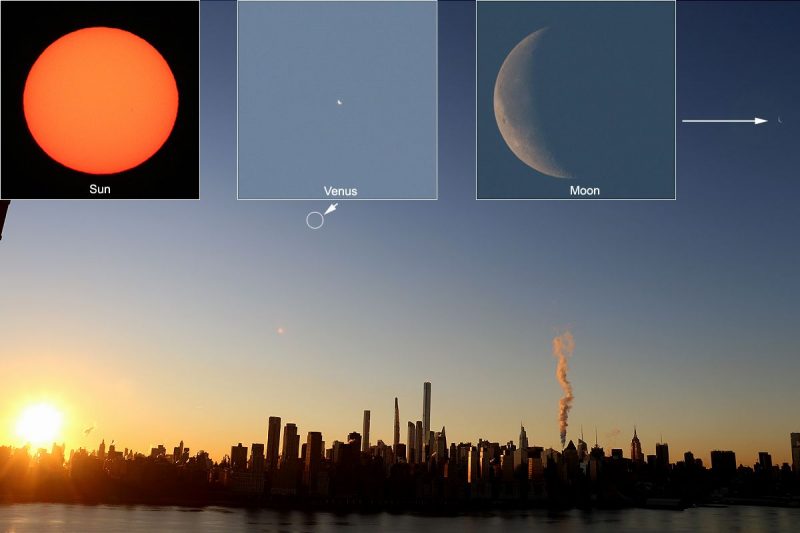
You might know that Venus is the brightest object in the sky after the sun and the moon. But, did you know you can see Venus during the day?
Cultures around the world know this. Some languages have a designated name for Venus as a daystar. For example, in many eastern European languages Venus is also known as Danica, the daystar of Slavic mythology.
When Venus is near its greatest brilliancy, as it is in early February 2022, it’s easiest to spot shining out from a blue sky. Venus is currently a morning object, so you can find it before sunup and watch it with the eye until after the sun rises. At the end of the month, around the morning of February 27, the crescent moon will pass close to Venus. These pairings are ideal for photographers.
Why can you see Venus during the day? Because Venus is so bright thanks to its location near us, proximity to the sun and reflective clouds. The only natural objects that outshine Venus are the sun and moon.
The 2022 lunar calendars are here. Order yours before they’re gone!
How to see Venus in the daytime
There are many different techniques for spotting Venus in the daytime. Some of the more common are mentioned here:
2. Venus when our moon is nearby
3. Venus when it’s transiting through the meridian
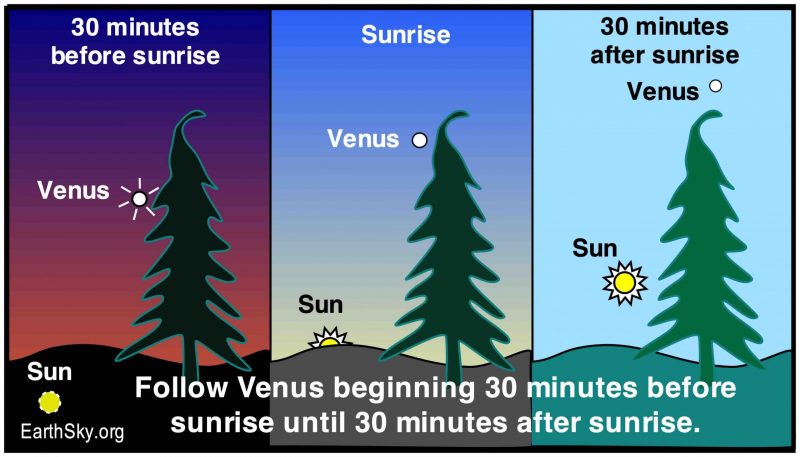
Observe Venus in the predawn sky
Take advantage of Venus’s brilliance this month by tracking it down in daylight. Finding Venus in daylight in the morning sky is much easier than finding it in the evening sky. That’s because you can start watching it before sunrise, then follow it until after sunrise.
No matter where you are on Earth, here are some general rules to follow for seeing Venus shortly after sunrise:
– Use a free astronomy app, such as Stellarium, to enter your exact location. You can find out where Venus is with respect to the sunrise (or the moon) in your sky on a specific date.
– Check a good sunrise/sunset calculator for the exact time of sunrise at your location, such as this one at sunrisesunset.com.
– Find Venus before sunrise. It’ll be easy because it’ll be the brightest starlike object in the sunrise direction. Then keep an eye on it, as long as you can, after the sun pokes above the horizon. Be sure not to look at the sun! To make it easier, position yourself so that Venus is placed in your sky in relationship to a foreground object, such as a tree or utility pole. When you spot Venus in daylight, it will be small and inconspicuous. If you look away and look back, it will be hard to find it again. It helps a lot if you have an object nearby, such as a tree or the moon.
– Speaking of the moon … see the charts below and read on.
Charts for Venus and the moon in February
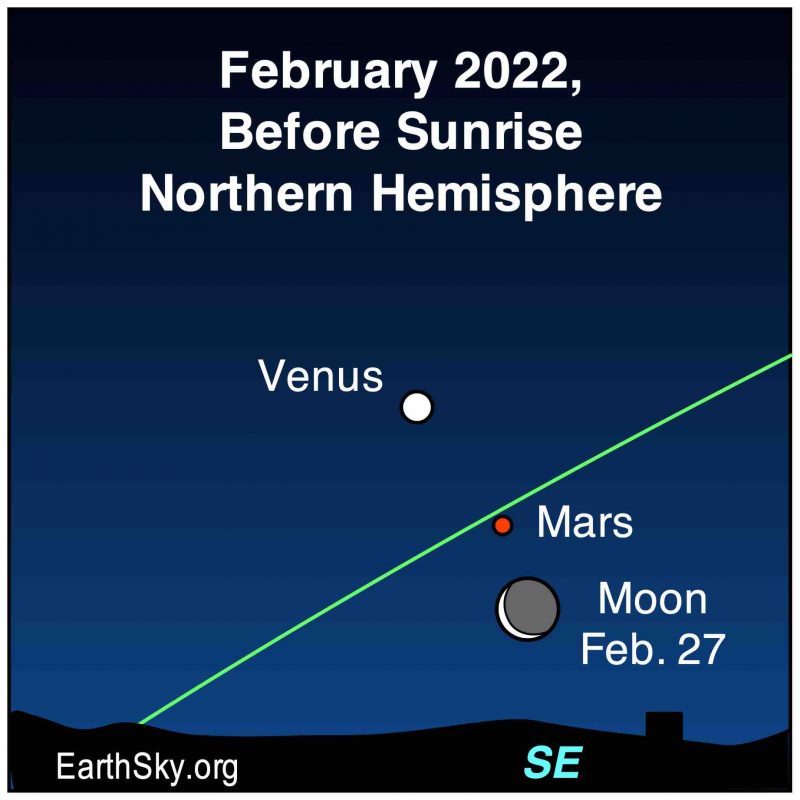

Observe Venus when the moon is nearby
On the mornings around February 27, the waning crescent moon and Venus will be in the same neighborhood of the sky. That’ll be an excellent time to look because Venus will still be relatively near its February 9, 2022, greatest brilliancy. If you catch a good photo of the moon and Venus, be sure to submit it to EarthSky!
Even on the days the moon is not especially close to Venus in our skies, it can still help you navigate to this bright planet. This is especially true when Venus is positioned exactly halfway between the moon and the sun. This happens somewhere on Earth every month, although the three objects might not be in a perfect line. Use Stellarium to find out when this will happen next for you. Just set the scene for the early morning sky, and click forward through the dates.
Of course, the easiest way to find Venus in the daytime is just before or after an occultation by the moon. During such events, the moon passes in front of Venus from our earthly perspective. And – especially if the occultation happens in daytime from your location – you might glimpse Venus near the lighted (or darkened) edge of the moon. Unfortunately, for a fixed location on Earth, occultations of Venus are rare.
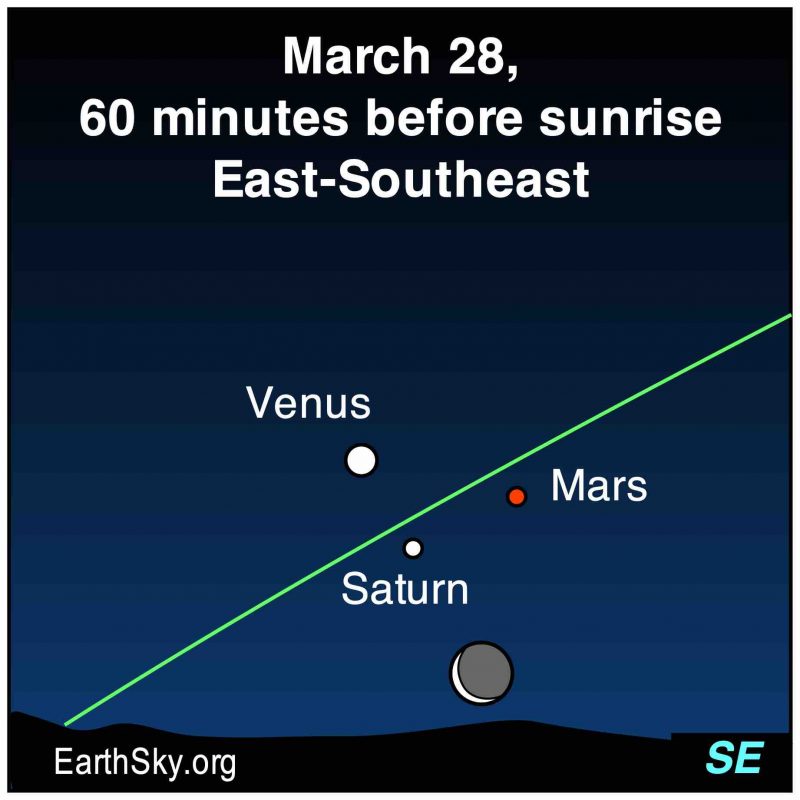
Observe Venus transiting the meridian
Venus orbits one step inward from Earth. So we always see it near the sun in our sky, and, generally speaking, after sunrise it’s hard to see. But Venus is up there, every day, following or leading in the path of the sun across our sky. So, if you could see Venus any day, you’d always notice it passing due south in your sky once a day (as seen from the Northern Hemisphere), or due north once a day (as seen from the Southern Hemisphere), just as the sun does. When Venus passes due south (or due north), astronomers say that Venus is transiting the meridian in your sky.
To find Venus as its transits your meridian, you need to know the direction south (from the Northern Hemisphere) or north (from the Southern Hemisphere). In many cities in North America, streets are aligned with north/south or east/west directions. In such cities, it’s easy to find those cardinal points.
No north-south streets? Here’s another way to find due south (or due north) in your sky. Try putting a stick in the ground and observing when the sun is highest in your sky, using your astronomy app. At the instant the sun is highest (aka astronomical noon or solar noon), the sun will be due south from the Northern Hemisphere (and due north from the Southern Hemisphere). And the shadow of your stick will point to the north (or south). If you mark these cardinal directions with respect to your favorite observing spot, it’ll make your observing easier! And it’ll help you find Venus during the day.
The meridian is just an imaginary line across your sky – a great circle from due south to due north – passing through your local zenith or highest point in the sky. At the moment it transits the meridian, Venus is the highest in the sky for that day.
If you know the direction of south (or north), the next step is to find out how high in your sky Venus is as it transits your meridian. Your astronomy app (or Stellarium) can help you with the exact moment of meridian transit as well as exact altitude of Venus at that time.
As it’s not easy to judge angles in the sky, start observing low in the direction of south (or north) and then move slowly upwards, until you meet a bright point of light.
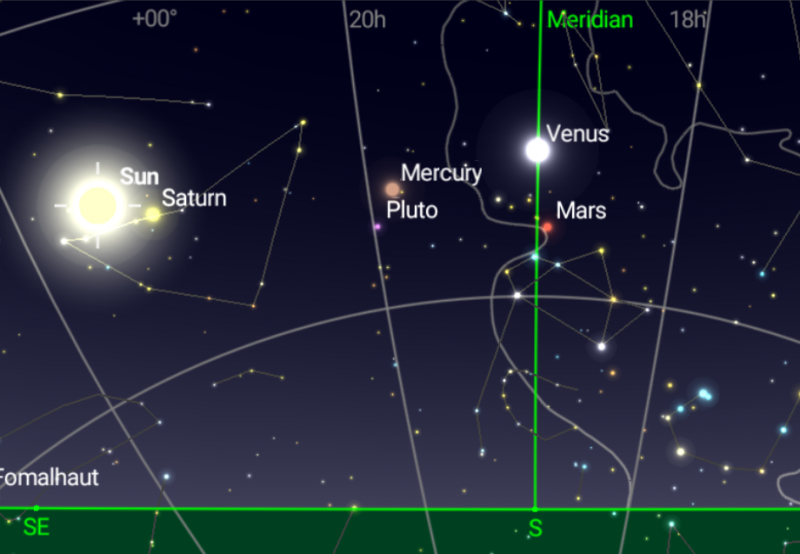
A daylight Venus photo gallery
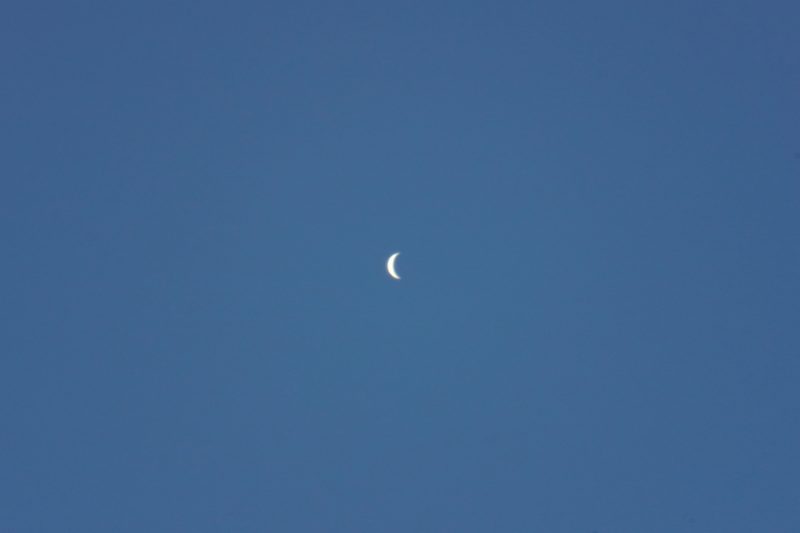

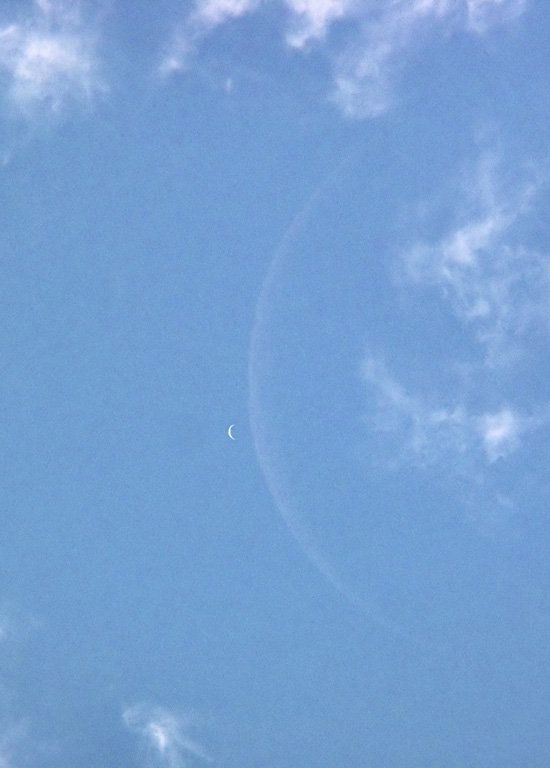
Bottom line: February 2022 is a great month to try to spot Venus in a daytime sky. Venus shines at its brightest around the morning of February 9, and the moon passes Venus at the end of the month.
Read more: 10 surprising space objects to see in the daytime sky.
The post Venus in the daytime: How to see it first appeared on EarthSky.
0 Commentaires